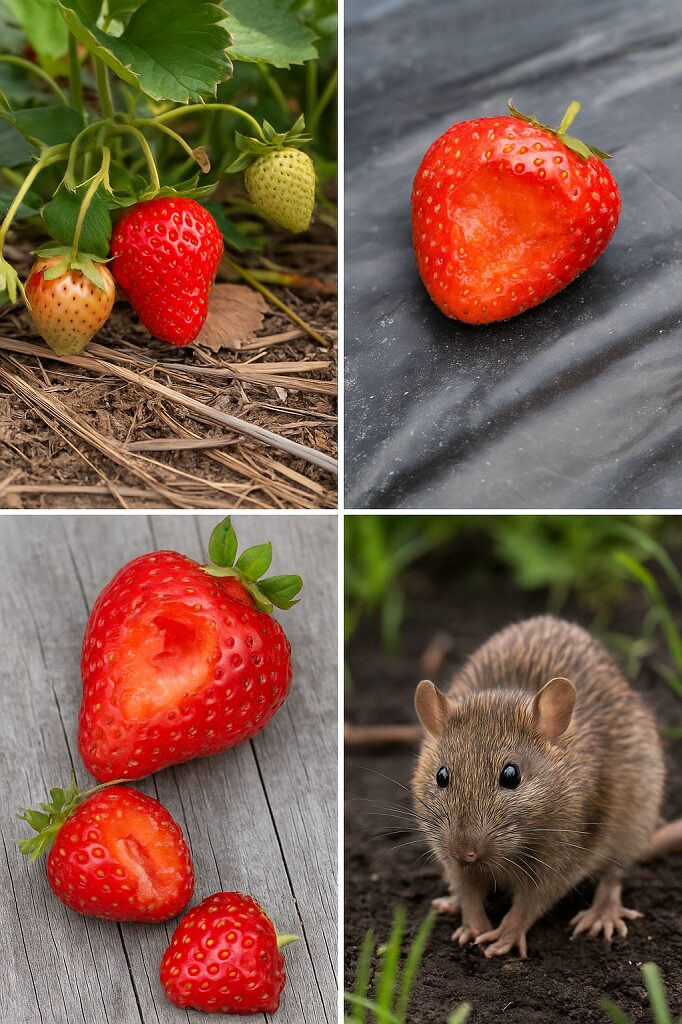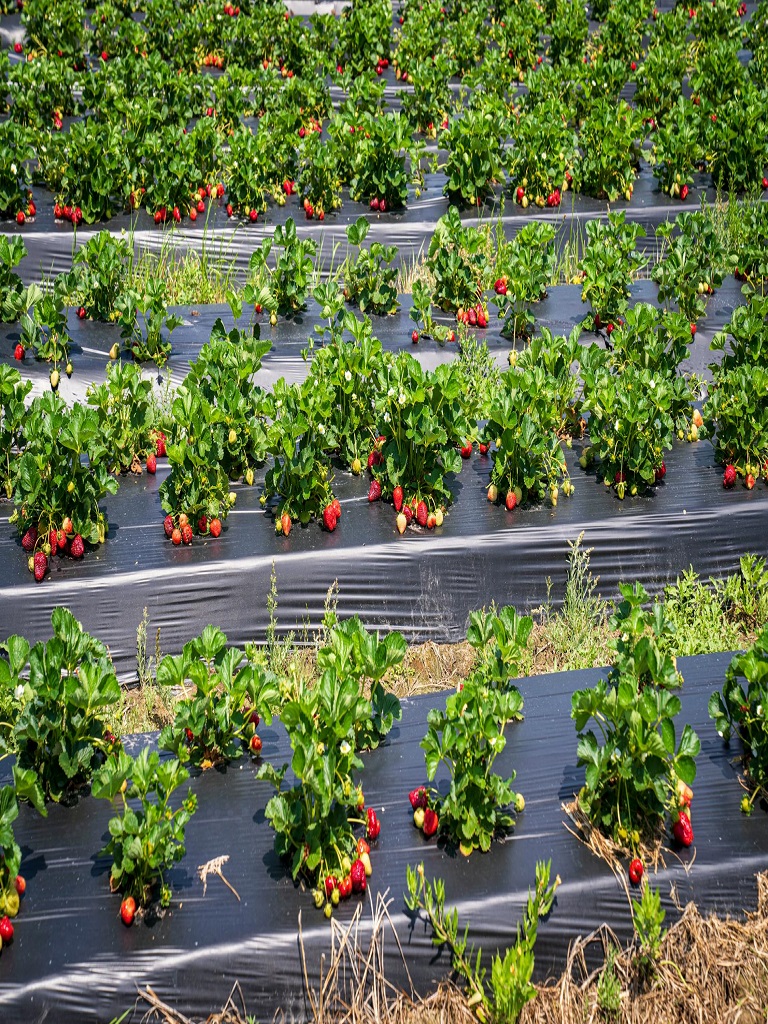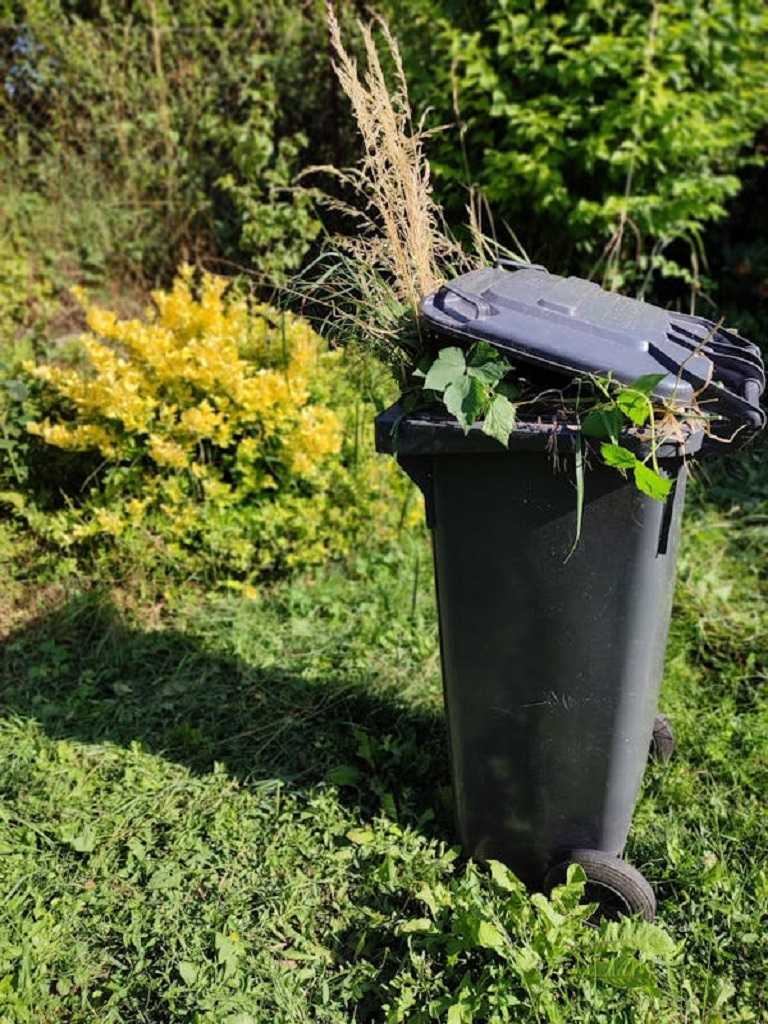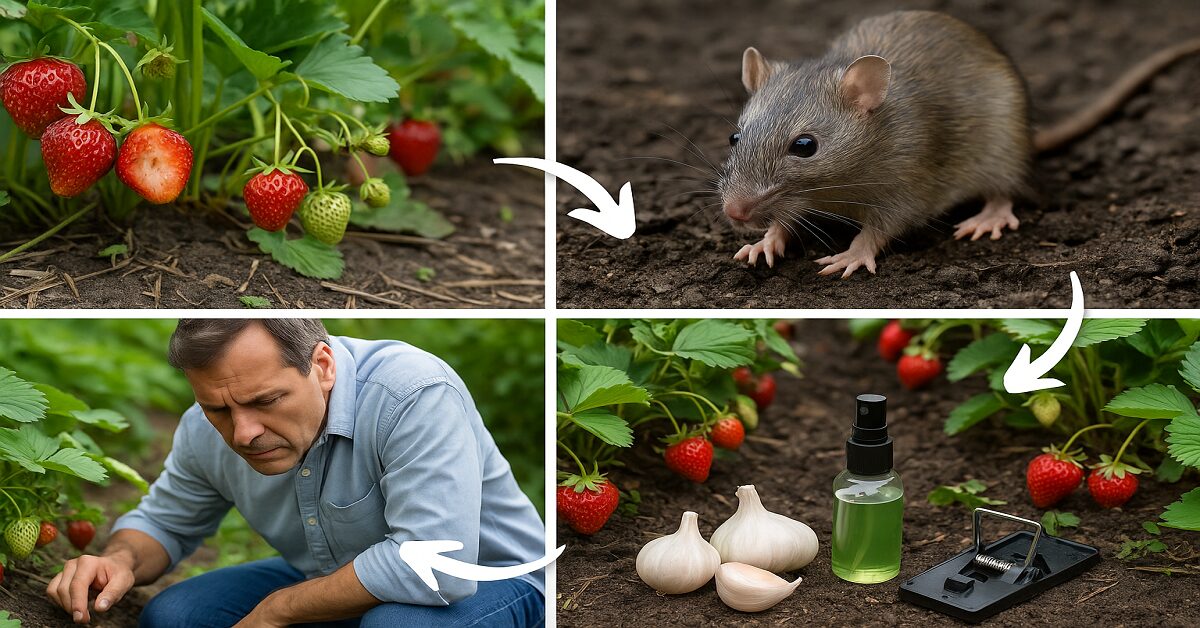You’ve waited weeks, maybe months, for those perfect strawberries. You walk out, basket-ready, only to find half-eaten berries, scattered leaves, and the undeniable signs of hungry little intruders. Sound familiar? Rodents like mice, rats, squirrels, and chipmunks see your strawberry patch as an all-you-can-eat buffet.
Frustrating? Indeed. But here’s the good news—you don’t need traps or toxic sprays to win this battle. These 15 simple, proven methods will help you save your garden naturally and effectively. Stick around—by the end, you’ll know how to keep your strawberries safe, sweet, and rodent-free. Let’s get started!
1. Install a Rodent-Proof Fence

Fencing is your garden’s bodyguard. A proper barrier can keep most rodents out of your strawberry patch.
Tips:
- Use ½-inch hardware cloth or chicken wire.
- Bury the fence 6–12 inches underground to stop burrowers like moles and voles.
- Ensure the wall stands at least 2 feet high.
Cover all open sides and regularly inspect for holes. This easy step is one of the most practical ways to protect your strawberry garden from rodents.
2. Elevate with Raised Beds
Raised beds are not just pretty—they’re practical rodent deterrents, too. They make it harder for rodents to reach your plants and improve soil drainage.
Tips:
- Build raised beds with wood, bricks, or metal frames.
- Add mesh wire at the bottom before filling with soil.
- Keep beds at least 12–18 inches high.
Raised beds make it easier to handle your strawberries and spot early signs of pests. Bonus: They reduce weeds and make harvesting a breeze.
3. Use Row Covers

Floating row covers act like garden armor. They’re lightweight fabric sheets that keep rodents, birds, and insects off your plants while still allowing sunlight and water through.
Tips:
- Use breathable polyester or spun-bond row covers.
- Anchor with garden staples or stones to prevent flapping.
- Remove during pollination or when temperatures get too hot.
Row covers are ideal during early fruiting stages when berries are most vulnerable. Think of them as a gentle, non-toxic shield for your strawberries.
4. Implement Companion Planting
Certain plants are like natural pest control. Companion planting helps mask the smell of strawberries or repel rodents outright.
Try planting around strawberries:
- Mint – powerful scent repels mice.
- Garlic or onions – disliked by many rodents.
- Marigolds – repel various pests and add color.
Plant these in border rows or nearby beds to discourage unwanted visitors. It’s an eco-friendly way to make your garden both functional and fragrant.
5. Maintain Garden Cleanliness
Rodents love mess. Overgrown weeds, fallen fruits, and debris offer food and hiding spots.
Clean garden habits include:
- Removing old or rotten strawberries daily.
- Pulling out weeds regularly.
- Raking leaves and grass clippings.
The cleaner your space, the fewer the rodents. A tidy strawberry garden also promotes better airflow and plant health, giving your fruit the best chance to thrive naturally and rodent-free.
Would you like me to continue with #6 to #15 in the same 90-word format?
6. Secure Compost Bins

Compost piles are like all-you-can-eat buffets for rodents. If your compost is too close or uncovered, it can lure them straight to your strawberry patch.
Tips:
- Use sealed, rodent-proof bins with tight-fitting lids.
- Avoid adding meat, dairy, or greasy foods.
- Keep compost bins at least 20 feet away from your garden.
Rodents are experts at sniffing out food. A secure compost setup helps reduce the overall rodent population around your property, which is good news for your strawberries.
7. Employ Natural Predators
Nature has your back—if you let it. Owls, hawks, and even non-venomous snakes can be powerful rodent deterrents.
How to attract natural allies:
- Install owl nesting boxes on tall poles or trees.
- Avoid using rodenticides that harm predators via secondary poisoning.
- Let native snakes or predatory birds roam safely around your property.
Encouraging wildlife creates a natural rodent control system—no chemicals or traps are required. A garden that supports its ecosystem is also healthier and more balanced overall.
8. Set Traps Strategically
Traps can help lower rodent populations quickly, especially when placed in the right spots. They’re most effective when you know where rodents are sneaking in.
Trap tips:
- Use snap traps, live traps, or electric traps.
- Bait with peanut butter, oats, or sunflower seeds.
- Set traps along walls, fences, or visible rodent trails.
Always check traps daily and relocate humanely if using live ones. For best results, combine with other long-term strategies to protect your strawberry garden from rodents.
9. Utilize Ultrasonic Repellents
Ultrasonic repellents use sound frequencies that humans can’t hear—but rodents definitely can. They’re a tech-savvy solution that works quietly in the background.
Best practices:
- Place devices every 10–15 feet for maximum coverage.
- Choose models that repel multiple species, like mice, rats, and squirrels.
- Keep away from pets like hamsters or guinea pigs, who may be sensitive.
While not foolproof, they supplement physical barriers and garden hygiene greatly, especially in patios, greenhouses, or smaller garden zones.
10. Apply Natural Repellents
Forget harsh chemicals—there are plenty of natural repellents that rodents can’t stand.
DIY ideas:
- Mix garlic oil and cayenne pepper in water and spray around your garden.
- Utilize peppermint oil on cotton balls near entry points.
- Sprinkle blood meal or predator urine granules near garden edges.
For best results, reapply weekly after heavy rain. These natural deterrents are kid-safe, eco-friendly, and perfect for anyone trying to keep things chemical-free.
11. Install Motion-Activated Sprinklers
Rodents hate surprises—and nothing says “get lost” like a burst of cold water. Motion-activated sprinklers scare away pests the moment they cross into your garden.
Tips for setup:
- Position at entry points or corners.
- Adjust sensitivity to detect small animals like squirrels or rats.
- Move periodically to prevent rodents from adapting.
Bonus: they also keep out birds, raccoons, and even cats. Plus, you can water your plants and ward off invaders simultaneously—win-win!
12. Create Physical Barriers
Covering strawberry plants directly is a simple way to block rodents from snacking.
Barrier ideas:
- Use fine mesh netting or bird netting.
- Create dome-style cages with PVC pipe and hardware cloth.
- Anchor covers securely to prevent sneaky gaps.
Ensure air and light still reach your plants. These barriers are beneficial during the fruiting stage when strawberries are most vulnerable and tempting to rodents.
13. Limit Bird Feeders Nearby
Bird feeders may bring joy—but they also bring rodents. Dropped seeds and food scraps attract mice, squirrels, and even rats.
Smart feeding habits:
- Use no-spill bird feeders with catch trays.
- Clean up dropped seeds daily.
- Keep feeders at least 25–30 feet from the garden.
You don’t have to give up your backyard birdwatching—keep things tidy and contained. If rodents can’t find snacks near your strawberries, they’re less likely to stick around.
14. Regularly Inspect for Entry Points
Rodents are sneaky. Small holes, loose fencing, or forgotten cracks can give them free access to your garden.
What to check:
- Fence lines for burrows or gaps.
- Raised beds for chewed edges or dug corners.
- Garden sheds or compost bins for hidden entry points.
Inspect thoroughly every couple of weeks, especially in early spring and fall. For a long-lasting fix, plug holes with steel wool, hardware cloth, or concrete.
15. Rotate Crops Annually
Rodents are creatures of habit. You’re inviting trouble if you grow strawberries in the same spot year after year.
Why rotation helps:
- Disrupts rodent nesting and feeding patterns.
- It helps prevent soil-borne diseases and nutrient depletion.
- It confuses pests and makes your garden more resilient.
Try rotating strawberries with leafy greens, garlic, or onions to break the cycle. Your strawberries (and your soil) will thank you for it.
Related: Growing Avocados in Small Pots at Home: It’s Easier Than You Think!
Conclusion
Protecting your strawberry garden from rodents requires vigilance, cleanliness, and strategic deterrents. By executing these 15 methods, you’ll create a hostile environment for pests and a haven for your strawberries.
Remember, consistency is key. Regularly monitor your garden and adapt your strategies as needed, and soon, you’ll enjoy the fruits of your labor—literally!




